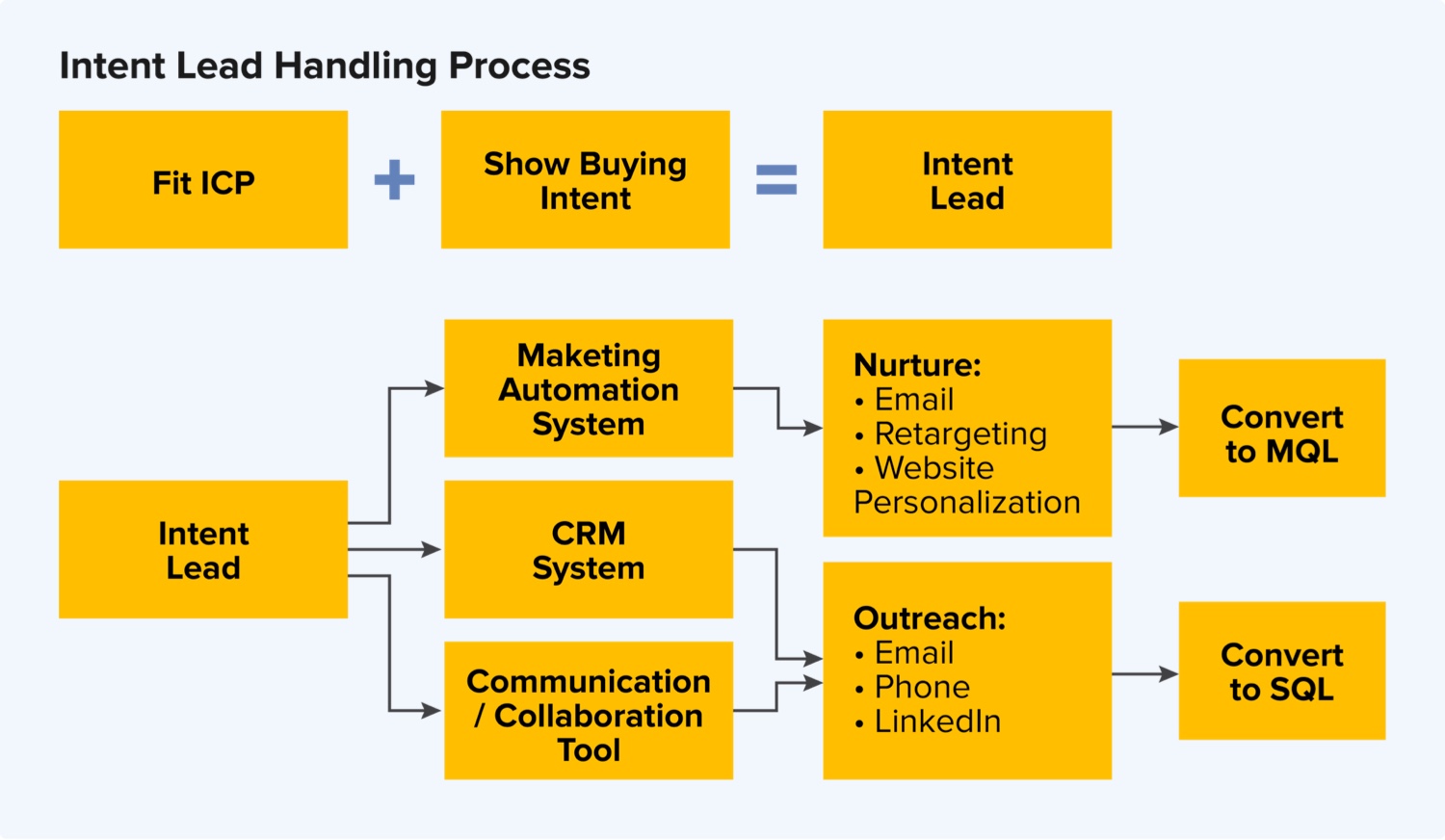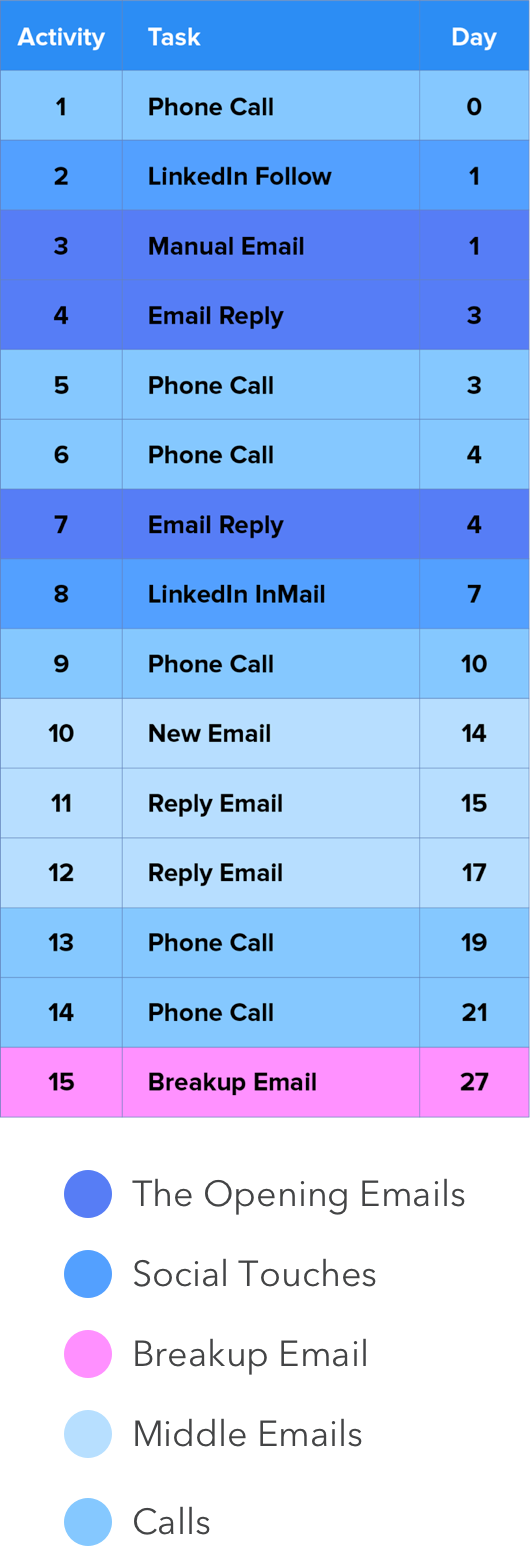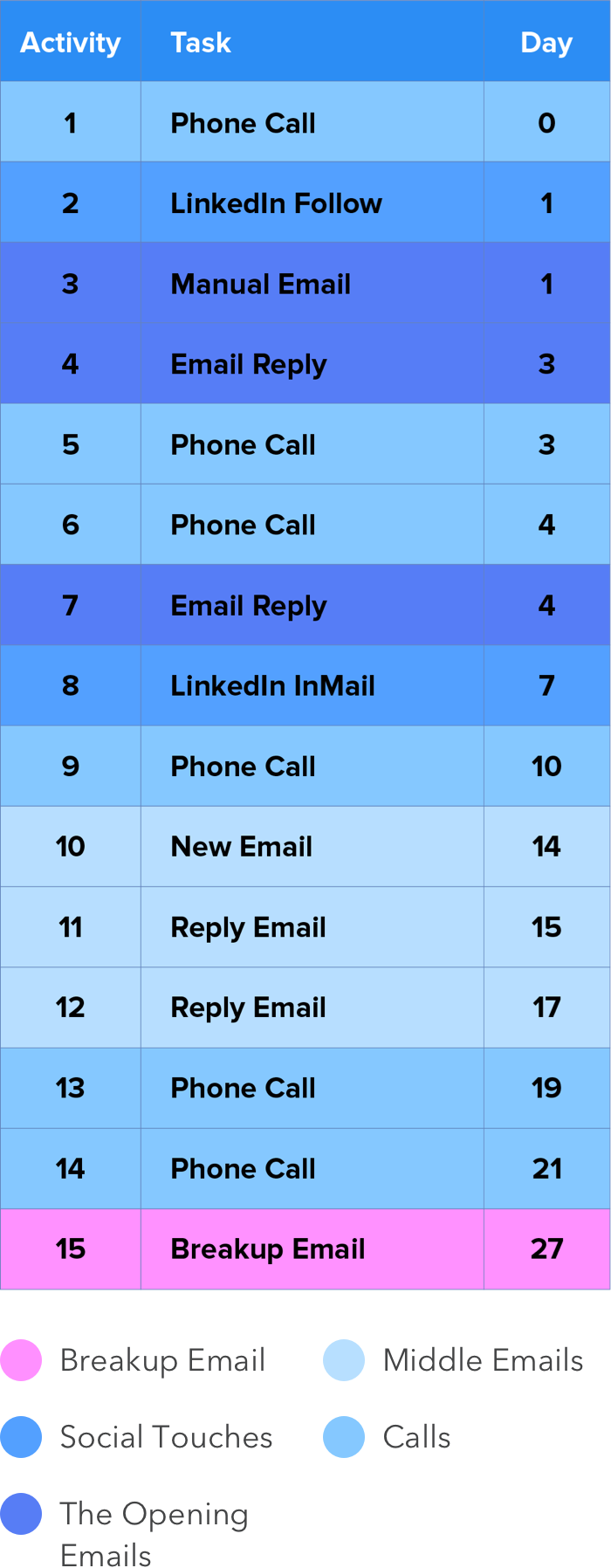Prospecting is a tough gig.
The objections. The daily rejection. Incorrect contact details. The pressure of delivering consistent results. The emotional ups and downs. The heavy admin.
It’s even harder when your prospects are cold. Researching the company and contact details is time consuming and often the lead goes nowhere.
Maximum effort, minimum return.
With this in mind, we’ve been focused on helping SDRs and BDRs (including our own team at Albacross) reduce time spent researching prospects so they can focus on the end goal - booking more meetings that result in increased opportunities and revenue.
Our team has come up with a pretty awesome framework which helps them achieve this.
Since our sales team started using this framework, opportunities have soared by 20%.
That’s a substantial amount of increased revenue potential.
Here’s how we did it.
# Stage 1 - Identify Intent leads
Rather than prospect cold leads, we use our own solution to identify the companies that fit our ICP and who show buying intent on our website. These are high value prospects that are in-market for a solution like ours but did not convert through our inbound stream.
These are neither inbound leads— they didn’t request a demo or sign up for a free trial. However, they’re not outbound leads either. They visited our website and showed interest. They know who we are.
We refer to these ‘in between’ leads as intent leads.
What can you do with intent leads?
Prospecting intent leads through outbound is highly beneficial for SDRs. These leads have already shown intent— they’ve been on your website. Plus, your SDRs/BDRs will have insight into who they are, what they viewed and what they’re interested in (intent activity data). They’ve got a real opportunity to create meaningful outreach here.
P.S want some email best practices for reaching out to intent leads? Download The Albacross Outbound Framework for Sales.
Having this intent data to hand means you can focus on high quality leads that are likely to convert instead of casting the net wide and hoping a cold lead materializes.
This strategy ultimately means you can prospect less people but get better results than before.
# Stage 2 - Enroll intent leads into outbound sequences
That said, intent leads still need a process. They still need to be worked. This is the hand off process we came up with. It focuses on sending intent leads either into your CRM or marketing automation system where they can:
- Be enrolled into a sales outbound sequence using various outreach tactics to convert them into an SQL
- Be sent to your marketing automation system for nurturing

For the purposes of this article, we’re focusing on A - enrolling intent leads into outbound sequences.
Here’s the outbound sequence we use at Albacross.
There are 15 touch points, spanning 27 days. This is based on The Agoge Sequence from Outreach and it works because it incorporates a combination of tactics which gives you a good foundation to test out which communication channels work for your prospects.
This sequence is just a guideline. If your prospects respond positively on a certain channel, make sure you accommodate that preferred communication channel rather than try to fit them into this sequence.
There’s a few key factors to consider when enrolling intent leads into an outbound sequence.
Look at firmographic data such as number of employees, revenue, location, technology stack (if applicable).
- Does the lead fit your ideal customer profile?


- Which of your personas does the intent lead represent?
Create a prioritization matrix like the one below which outlines who your priority personas are.
In the following example, the green tiles are high priority. These are prospects that can become an immediate lead and placed in a sequence (you can get contact details for the person working at the company through Albacross).
The yellow tiles are medium priority. These are prospects that can get you closer to an immediate opportunity. These tiles can be placed into an automated sequence, meaning that if there is a certain level of engagement in a sequence, you can then prospect manually.
Tiles in red are low priority and shouldn’t actively be prospected.
- What buying intent does the lead show?
Understanding this will help you take the best course of action— whether that be enrolling the lead into an aggressive outbound sequence or a nurture track.
When a prospect is showing buying intent it means they are likely to be considering making a purchase.
High intent leads:
- Visited a product and/or pricing page
- Session duration was above 1 minute
- Number of visits was above 2
Intent leads showing this level of activity should become top priority for your outbound sales folks, be put into an aggressive manual outbound sequence and should be personalized.
Low intent leads:
- Downloaded content
- Visited blog pages
- Session duration was less than 1 minute
Intent leads showing this level of activity should become lower priority, should go into a nurture sequence and should include some level of automation.
Once you have identified the level of intent activity these leads show, match their activity to their persona. This will help you narrow down the prioritization list even further. I.e. The most important personas that show high buying intent should be at the top of the prioritization list.
The intent leads can then go through the outbound sequence above.
You can use the same sequence of phone calls, emails and LinkedIn messaging for both outbound and nurture sequences (although you can add a few more phone calls to the aggressive outbound sequence if you wish. You could also start the sequence with an email for low priority leads instead of a phone call).
The difference between these sequences will be the level of automation implemented. You can automate all the touches for medium and low priority leads or start by automating just a few. If you choose the latter, you can start by automating the middle emails.
Focusing on intent leads instead of cold prospecting not only significantly reduces the time spent prospecting, it increases the number of potential opportunities you can generate which means more revenue.
This is the outbound framework we’ve created for our customers and our sales team. It works a treat.
We now generate 20% more opportunities using this framework.
Want to do the same? Download the full version of The Albacross Outbound Framework for Sales.
Your SDRs and BDRs will never look back once they’ve got their hands on it.
Bonus: You’ll also get tons of hints, tips on how to structure your outreach emails and copywriting best practices you can implement straight away.



